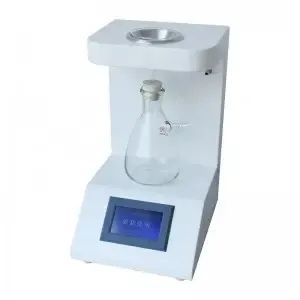 English
English



-
 Afrikaans
Afrikaans -
 Albanian
Albanian -
 Amharic
Amharic -
 Arabic
Arabic -
 Armenian
Armenian -
 Azerbaijani
Azerbaijani -
 Basque
Basque -
 Belarusian
Belarusian -
 Bengali
Bengali -
 Bosnian
Bosnian -
 Bulgarian
Bulgarian -
 Catalan
Catalan -
 Cebuano
Cebuano -
 China
China -
 China (Taiwan)
China (Taiwan) -
 Corsican
Corsican -
 Croatian
Croatian -
 Czech
Czech -
 Danish
Danish -
 Dutch
Dutch -
 English
English -
 Esperanto
Esperanto -
 Estonian
Estonian -
 Finnish
Finnish -
 French
French -
 Frisian
Frisian -
 Galician
Galician -
 Georgian
Georgian -
 German
German -
 Greek
Greek -
 Gujarati
Gujarati -
 Haitian Creole
Haitian Creole -
 hausa
hausa -
 hawaiian
hawaiian -
 Hebrew
Hebrew -
 Hindi
Hindi -
 Miao
Miao -
 Hungarian
Hungarian -
 Icelandic
Icelandic -
 igbo
igbo -
 Indonesian
Indonesian -
 irish
irish -
 Italian
Italian -
 Japanese
Japanese -
 Javanese
Javanese -
 Kannada
Kannada -
 kazakh
kazakh -
 Khmer
Khmer -
 Rwandese
Rwandese -
 Korean
Korean -
 Kurdish
Kurdish -
 Kyrgyz
Kyrgyz -
 Lao
Lao -
 Latin
Latin -
 Latvian
Latvian -
 Lithuanian
Lithuanian -
 Luxembourgish
Luxembourgish -
 Macedonian
Macedonian -
 Malgashi
Malgashi -
 Malay
Malay -
 Malayalam
Malayalam -
 Maltese
Maltese -
 Maori
Maori -
 Marathi
Marathi -
 Mongolian
Mongolian -
 Myanmar
Myanmar -
 Nepali
Nepali -
 Norwegian
Norwegian -
 Norwegian
Norwegian -
 Occitan
Occitan -
 Pashto
Pashto -
 Persian
Persian -
 Polish
Polish -
 Portuguese
Portuguese -
 Punjabi
Punjabi -
 Romanian
Romanian -
 Russian
Russian -
 Samoan
Samoan -
 Scottish Gaelic
Scottish Gaelic -
 Serbian
Serbian -
 Sesotho
Sesotho -
 Shona
Shona -
 Sindhi
Sindhi -
 Sinhala
Sinhala -
 Slovak
Slovak -
 Slovenian
Slovenian -
 Somali
Somali -
 Spanish
Spanish -
 Sundanese
Sundanese -
 Swahili
Swahili -
 Swedish
Swedish -
 Tagalog
Tagalog -
 Tajik
Tajik -
 Tamil
Tamil -
 Tatar
Tatar -
 Telugu
Telugu -
 Thai
Thai -
 Turkish
Turkish -
 Turkmen
Turkmen -
 Ukrainian
Ukrainian -
 Urdu
Urdu -
 Uighur
Uighur -
 Uzbek
Uzbek -
 Vietnamese
Vietnamese -
 Welsh
Welsh -
 Bantu
Bantu -
 Yiddish
Yiddish -
 Yoruba
Yoruba -
 Zulu
Zulu
flash point analyser
Understanding Flash Point Analyzers A Crucial Tool in Safety and Quality Control
In various industries, particularly those involving volatile substances like chemicals, oil, and gas, the concept of flash point stands out as a critical parameter for safety and quality control. Flash point refers to the lowest temperature at which vapors of a material will ignite when exposed to a flame or spark. Knowing the flash point of a substance is essential for handling, storage, and transportation. This is where flash point analyzers come into play, serving as indispensable instruments for determining this vital characteristic of materials.
Flash point analyzers come in various designs and configurations, ranging from simple handheld devices to sophisticated laboratory equipment. The main goal of these analyzers is to provide accurate and reliable measurements of the flash point, ensuring compliance with safety regulations and industry standards.
Understanding Flash Point Analyzers A Crucial Tool in Safety and Quality Control
There are two primary methods used in flash point testing closed cup and open cup methods. The closed cup method is generally preferred for volatile liquids as it tends to be more accurate, closely simulating real-world scenarios where vapors are contained. In contrast, the open cup method is often used for less volatile substances. Understanding the differences between these methods is crucial for achieving the most reliable results, and a good flash point analyzer will support both testing methods depending on the specific requirements of the substance being analyzed.
flash point analyser

In addition to general safety protocols, flash point analyzers are also used to comply with regulations set by organizations such as the Occupational Safety and Health Administration (OSHA), Environmental Protection Agency (EPA), and various international standards. These regulations dictate how volatile substances should be tested and handled to prevent fire hazards and chemical spills. An effective flash point analyzer can aid companies in maintaining their compliance with these regulations, thereby protecting their workforce and reducing liability.
Moreover, in the arena of product development, flash point analysis is crucial. Researchers and developers use flash point analyzers to assess new formulations and ensure they meet safety requirements before they are brought to market. A substance with a low flash point may require special handling instructions and storage conditions, impacting its marketability and application.
The evolution of flash point analyzers has also seen the integration of technology such as digital displays, automated data logging, and software compatibility. Modern devices often interface with computers, allowing for efficient data management and analysis. This not only enhances accuracy but also facilitates easier compliance reporting and quality assurance.
In conclusion, flash point analyzers are vital tools in ensuring safety, compliance, and quality across various industries. By accurately determining the flash point of substances, these analyzers help prevent hazardous situations and promote safe handling practices. As industries continue to evolve and face new challenges, the importance of reliable flash point testing remains constant. Investing in high-quality flash point analyzers is not just a matter of legal compliance; it is a commitment to safety, quality, and the well-being of employees and consumers alike.
-
Testing Equipment Industry Sees Major Advancements in 2025: Smart & Precision Technologies Lead the WayNewsJun.06,2025
-
Applications of Direct Current Generators in Renewable Energy SystemsNewsJun.05,2025
-
Hipot Tester Calibration and Accuracy GuidelinesNewsJun.05,2025
-
Digital Circuit Breaker Analyzer Features and BenefitsNewsJun.05,2025
-
Benefits of Real-Time Power Quality Monitoring Devices for Industrial EfficiencyNewsJun.05,2025
-
Earth Fault Loop Testing in High-Rise Building Electrical SystemsNewsJun.05,2025



